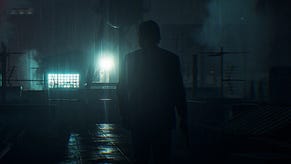Alan Wake was built on an open-world engine
Part way through Alan Wake's development, Remedy reluctantly scrapped its open-world design, generating some serendipitous consequences.
"The biggest mistake we made [while developing Alan Wake] was following a sandbox design. It simply did not fit with our story-driven focus," head of franchise direction Oskari Häkkinen told EDGE.
“A thriller is very much like a rollercoaster. You need those build-ups to make the plunges feel all the more exhilarating. We just weren’t getting this in a sandbox design because all the game-istic things you need were detracting from the story being the focal point.”
Remedy had just 55 staff while building this shelved open world, and rejigged Max Payne's level editor to build a robust environmental generation system, using 60,000 reference photos gathered on a trip to the US and Canada as well as materials gathered by Microsoft's Seattle staff.
Having done all this work, Remedy was understandably reluctant to can its open world plans - but found the engine still lent itself to the new, linear take.
“Because the environments were naturally much larger, we could make reference to things that could be seen in the distance and so foreshadow events. We could create landmarks so the player always had a sense of direction," Häkkinen said.
"Having flexibility within the environments also gave us the opportunity to make any given path as wide or as narrow as we pleased. It allowed us to play around with gameplay – narrow stealth areas like when the cops are chasing Wake, and wider areas to allow exploration and that sense of: ‘Oh s**t, I’m lost… what’s in the woods?’ So, yeah, it resulted in a much better game and it removed the linear feeling on the whole.”
Alan Wake released on Xbox 360 in 2010 and was something of a slow-burn hit - but the recently released PC port hit the top of the Steam charts and sold well enough to recoup costs in just 48 hours.






.jpg?width=291&height=164&fit=crop&quality=80&format=jpg&auto=webp)



